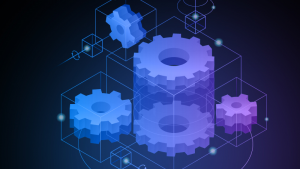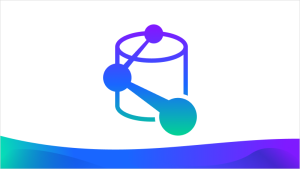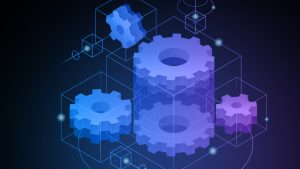AIOps is an IT approach that applies artificial intelligence to IT operations, bringing process efficiencies to organizations. Learn more about the benefits of AIOps in this AIOps guide.
As the globe strides into 2023 — with rapid change and macroeconomic uncertainty looming — organizations want tools and technologies that enable them to become more efficient, reduce costs, and innovate more.
These are precisely the business goals of AIOps: an IT approach that applies artificial intelligence (AI) to IT operations, bringing process efficiencies. AIOps, together with an observability platform, can enable organizations to precisely identify the root cause of cloud application performance and security issues.
AIOps also enables organizations to remediate these issues as they occur — and, in some cases, can prevent problems before they occur and disrupt operations.
According to Dynatrace data, 71% of CIOs say the explosion of data produced by cloud-native technology stacks is beyond human ability to manage.
That may be why numerous organizations have invested in AIOps technology. According to recent data, the AIOps market is worth some $17 billion per year. Growing investment reflects organizations’ need to have greater visibility into incidents within their IT environments. Further, Gartner expects the proportion of large companies that use AIOps and digital experience monitoring tools to monitor apps and infrastructure will increase from 5% in 2018 to 30% in 2023.
In this AIOps guide, we outline what AIOps is, the benefits of AIOps for organizations, and how they are using AIOps and automation.
What is AIOps?
AIOps is an IT approach that uses artificial intelligence to automate IT operations (ITOps), such as event correlation, anomaly detection, and root-cause analysis. A modern approach to AIOps serves the full software delivery lifecycle. It addresses the volume, velocity, and variety of data in complex multicloud environments with advanced AI techniques to provide precise answers and intelligent automation.
In its most basic form, IT automation executes scripts or processes on a schedule or in response to particular events. A unified approach to automating IT processes using a tightly integrated automation platform is essential to avoid poorly integrated, siloed services. An IT automation strategy should start by breaking down the workflow, the types of operations they will perform, and how teams can best monitor and optimize them in production.
 |
What is AIOps? An insider’s guide to AI for IT ops — and beyond – blog
Many organizations are turning to AI for ITOps in place of manual processes. But what is AIOps, and how can it support your organization? |
 |
Developing an AIOps strategy for cloud observability – eBook
Facing increasing IT complexity, customer demand, and security issues, organizations are embracing AIOps to automate how they develop software. |
 |
What is IT automation? – blog
IT automation is crucial to address the challenges of maintaining complex services. See how IT automation helps teams reduce manual tasks and more. |
What are the benefits of AIOps for organizations?
As organizations automate processes in their complex multicloud environments, they can gain several benefits. These environments are rapidly changing and sometimes ephemeral. IT teams can’t keep up with routine tasks of cloud management. As they fall behind, environments can suffer from application outages, increased costs, and frustrated customers. Ultimately, IT automation can deliver consistency, efficiency, and better business outcomes for modern enterprises.
Automating IT practices offers enterprises faster data centers and cloud operations, as well as increased flexibility and accuracy. Additionally, automating routine IT tasks eliminates the human element — and the potential mistakes that come with it.
 |
AIOps and digital transformation modernize BT – blog
AIOps and digital transformation go hand in hand. Discover how companies like BT have enlisted AIOps as they evolve their service portfolio. |
 |
AIOps done right – eBook
AIOps enables autonomous operations and boosts innovation, but you need to know how to implement it correctly. Learn the keys to AIOps success. |
 |
Power boundless observability, security, and business analytics with Grail – resource center
Discover the benefits of the Dynatrace data lakehouse technology, Grail, as well as the importance of a data lakehouse, how it can bring insights to life, and more. |
AIOps use cases: How have organizations used AIOps?
Today, many organizations strive for digital transformation. As organizations digitize and modernize, they can in turn drive innovation, increase revenue, and create operational efficiencies. But many also lack a vision for digital transformation or the means to execute on that vision through technology. Enter AIOps and digital transformation, which can help organizations actualize their goals.
For successful organizations engaged in digital transformation, AIOps and digital transformation go hand in hand.
Here are some stories of how users take to cloud modernization, digital transformation, and workflow automation with AIOps.
 |
Applying real-world AIOps use cases to your operations – blog
AIOps offers myriad benefits, including increased automation. Find out how to apply AIOps use cases to address real-world operations issues. |
 |
Customer panel: Innovating with advanced AIOps – video
View the on-demand panel discussion of how AIOps is powering a new era of automation and innovation in the modern cloud. |
 |
How Park ‘N Fly innovates with IT automation, AIOps, and observability – blog
For Park ‘N Fly, positive customer experience via technology is the backbone of the business. That’s where AIOps and observability come in. |
 |
How Park ‘N Fly eliminated silos and improved customer experience with Dynatrace cloud monitoring – blog
Park ‘N Fly relies on successfully integrating its booking system with its custom-built kiosks located at its off-airport parking lots. See how an observability platform and AIOps help. |
 |
Creating a seamless end-user experience with an AIOps platform approach to DEM – blog
Digital experience management helps companies deliver seamless, end-user experiences. Learn why an AIOps platform approach to DEM is the key. |



Looking for answers?
Start a new discussion or ask for help in our Q&A forum.
Go to forum